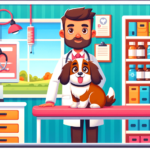This post contains an affiliate link, which means if you purchase after clicking the link I may receive compensation.
On the other hand, there are several dog owners that assert the natural aspect of feeding raw meat to their pets. Their reasoning is that dogs would have fed upon other animals in the wild anyway. It may, hence, be their need to have raw meat for almost every meal when they’re domesticated.
In order to make a wise decision regarding the feeding of raw meat to dogs, we should take a careful look at several factors. While every situation may be different – such as the relative cost of raw meat and the size of your dog – there are a few general points to take into account. We’ll be discussing a few of them below:

The Balanced Diet Factor
Brands and companies that produce dog food in cans would most likely tell you that raw meat doesn’t provide a balanced diet for dogs. Vegans and other anti-meat people would most likely do the same. However, this doesn’t mean that those rare steaks are to be shunned altogether.
The raw meat diet shouldn’t just be about meat. It’s also required for dogs in order to gain the minerals and vitamins they genetically need. For the nutrients that meat doesn’t provide, you can always add in bones, supporting supplements, and the necessary fatty acids for good measure. TruDog makes a freeze-dried raw dog food that is a perfect combination of nutrition and supplements. I strongly recommend this food.
Dogs have definitely evolved just like humans, and their dietary requirements may have also changed. Therefore, they can benefit from a natural and processed diet just like we humans. Again, though, more and more people are now looking toward a natural way of eating, such as the paleo diet.
While dogs can now digest starch easily, this doesn’t mean that it’s all we give them. Commercial dog food may also contain a lot of nutrients, but the preservatives and fillers just may not be worth it.
The Bacteria Risk
As humans, we wash our meat and cook it. This greatly reduces the number of bacteria crawling over the food. However, raw meat could have a high risk of dangerous bacteria such as salmonella. All this is a fact, but there are contaminations in processed pet food as well. Kibble is by far the best example here since it had to be recalled due to being unfit for pet consumption.
Fortunately, your dog is probably naturally engineered to handle even the salmonella bacteria. Dogs’ stomachs have a high amount of acid in relation to ours. Hence, they can dissolve bile and enzymes in order to process the bacteria that would be harmful to us.
A processed commercial food like Kibble, however, doesn’t have enzymes to digest. It can, thus, negatively affect your dog’s stomach even more than raw meat. If salmonella is consumed, it can cause some gastric illness but will not be as harmful as it is to humans.
The good news is that if you get meat from the butcher, the dangers of bacteria are greatly reduced. Plus, freezing the meat at -20℃ would likely kill off any parasitic pathogens. The bad news? The bacteria dogs digest can spread again through their feces, thus causing illnesses to humans. If you catch an illness from this, you may not even be able to get better with strong antibiotics.
Avoiding the Risks
If you want to avoid the risks of bacteria as much as possible, there are a few things to take care of. First, the meat must be obtained from a reliable supplier. This needs a lot of thought since human foods, even salads, could contain bacteria like salmonella.
When washing the meat, make sure your hands and surfaces are thoroughly cleaned and separate the different types of food. If you have to defrost something, do it by placing the item in the fridge inside a sealed container on the lowest shelf possible.
After handling the food, wash everything once again and dry the surfaces well. All it takes is a bit of knowledge and attention; your dog’s food could then be as harmless as your own!
Time Efficiency
The above process for meat handling may sound very time-consuming and lengthy. However, all it takes is a bit of practice and working the procedure into your routine. You’ll soon be finding yourself doing it as a routine, just like you prepare food for yourself.
The Aggression Question
Many people who are against the raw meat diet for dogs justify their stance by saying that it increases canine aggression. The reasoning is that when dogs get used to raw meat, they would probably smell it on humans and animals all the time. The result could be a potentially dangerous pet.
However, this has proven to be a complete myth through and through. Dogs may love eating their raw meat so much that they become aggressively protective of it while eating. This does not mean that they grow more aggressive in general.
Conclusion
There’s a lot to be said for feeding dogs raw meat. While the process itself may be difficult and even deemed unethical by some, a raw meat diet does have a lot of benefits for dogs.
When in doubt, consult the experts. Ask your vet about the best meal plan for your dog. They would be better equipped to gauge what your specific canine requires and what foods can best provide it. However, you should be as wary of processed foods for your pets as you are for yourself. The more natural you go for your family, including your pets, the better.










